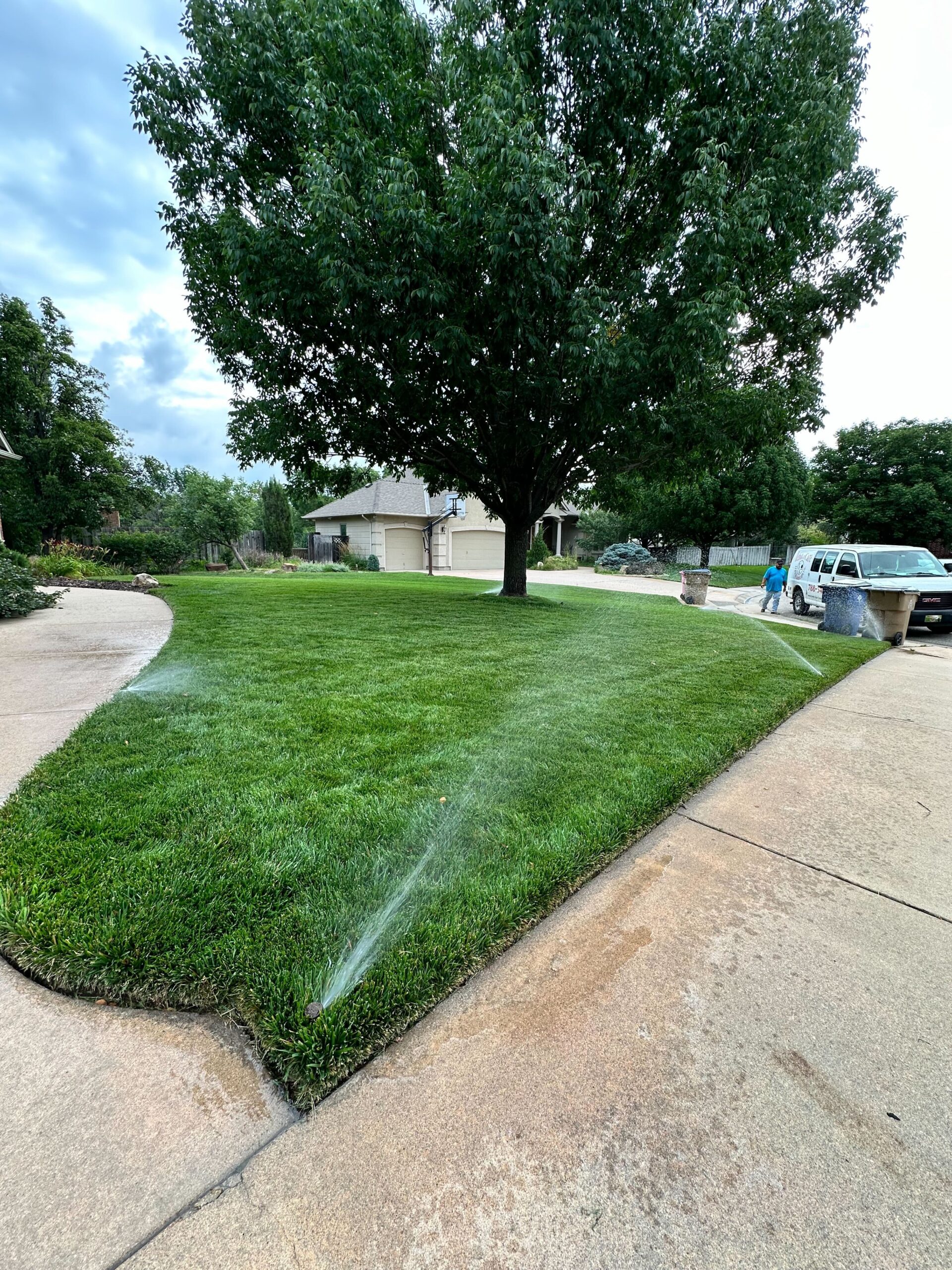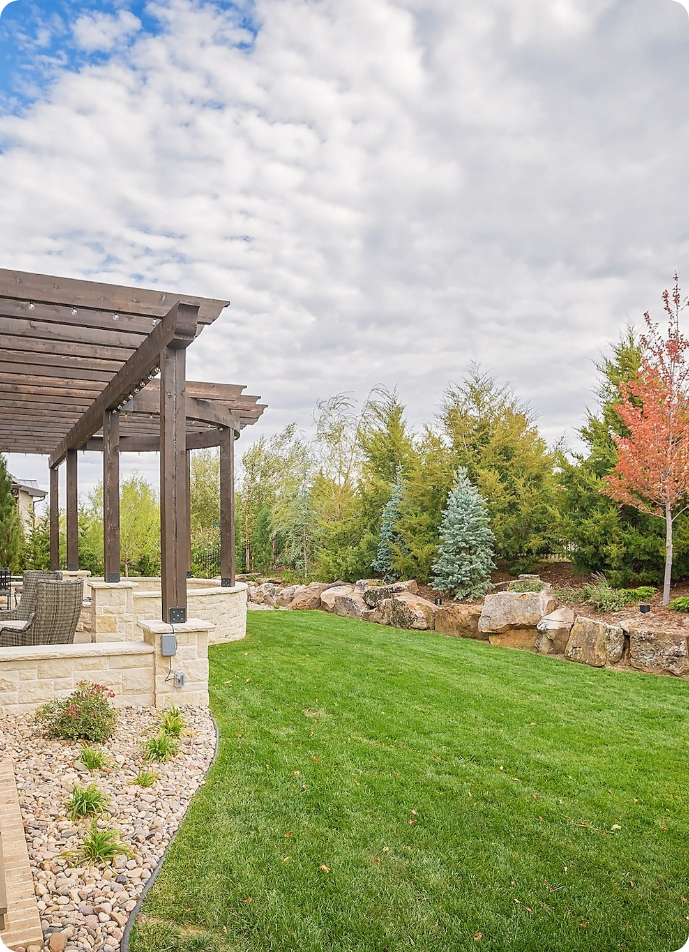As Wichita, Kansas, faces another hot summer with drought conditions affecting our region, it’s more important than ever to take the right steps to protect your lawn and landscaping. At Tendercare Lawn and Landscaping, we understand how tough it can be to keep your lawn lush and green when water restrictions, high temperatures, and dry spells are the norm. However, with some careful planning and proper lawn care, you can still maintain a beautiful and healthy yard despite the drought.
1. Watering Wisely: Timing is Everything
One of the most important factors in maintaining a healthy lawn during a drought is proper watering. However, in times of drought, it’s not just about how much you water—it’s also about when you water.
- Water Early or Late in the Day: The best times to water your lawn are early in the morning or late in the evening. This reduces water loss from evaporation that occurs during the heat of the day.
- Water Deeply, But Less Frequently: Instead of watering every day with small amounts, water deeply two or three times a week. This encourages your grass roots to grow deeper, making your lawn more drought-resistant in the long run.
2. Mow High and Keep Grass Longer
During a drought, you may be tempted to cut your grass short to conserve water—but this can actually stress your lawn more. Grass that’s mowed too short has less surface area to photosynthesize and less energy to grow.
- Mow at a Higher Setting: Set your mower to a higher setting, leaving the grass at a length of about 3 to 4 inches. This provides shade for the soil, helping it retain moisture longer and reducing the risk of weed growth.
- Leave Grass Clippings: Instead of bagging your grass clippings, leave them on your lawn. These clippings act as mulch and help to conserve moisture and add nutrients back into the soil.
3. Aerate Your Lawn
Soil compaction is a common issue during drought conditions, as the ground becomes dry and hard. Aeration—removing small plugs of soil from the lawn—helps to improve water penetration and root growth.
- Consider Fall Aeration: Aerating your lawn in the fall, when temperatures are cooler, can help the roots recover from the summer drought. However, aeration can also be beneficial in the middle of the growing season if your lawn has suffered under the heat and dryness.
4. Fertilize Strategically
Fertilizing is an essential part of lawn care, but during a drought, it’s important to use the right type and amount of fertilizer. Over-fertilizing can stress the grass even more.
- Use Slow-Release Fertilizers: A slow-release fertilizer will gradually feed your lawn, allowing it to maintain energy over time without encouraging rapid growth that can strain the grass.
- Avoid Fertilizing During Extreme Heat: Fertilizing during a drought or during the hottest months of summer can cause more harm than good, as it can stress the grass and lead to burnt spots.
5. Consider Drought-Tolerant Grass Varieties
If you find that your lawn struggles year after year with drought, it may be time to consider switching to drought-tolerant grass varieties, such as:
- Buffalograss: A native Kansas grass that requires less water and thrives in dry conditions.
- Zoysia Grass: Known for its ability to tolerate heat and drought, zoysia is a great choice for lawns in Wichita.
While it’s a bit of an investment upfront, switching to drought-tolerant grass can save you water and time in the long run, making it easier to maintain a beautiful lawn in the face of Wichita’s hot summers.
6. Irrigation System Maintenance
If you have an irrigation system, it’s important to ensure that it’s working efficiently, especially during dry spells.
- Check for Leaks: Leaky sprinklers can waste a significant amount of water. Regularly check your system for leaks or broken sprinkler heads.
- Adjust for Efficiency: Set your irrigation system to run in the early morning or late evening to minimize evaporation, and make sure the water is directed to your lawn, not to sidewalks or driveways.
7. Mulching Your Plants and Garden Beds
Mulching around trees, shrubs, and garden plants is another great way to conserve moisture and protect your landscaping during a drought.
- Use Organic Mulch: Materials like shredded bark, wood chips, or straw will keep moisture in the soil and prevent weeds from taking over.
- Apply a 2-3 Inch Layer: Apply a generous layer of mulch around your plants to protect their roots from the sun’s harsh rays and to retain water.
8. Consider a Lawn Care Service
Sometimes, despite our best efforts, drought conditions can be overwhelming. At Tendercare Lawn and Landscaping, we specialize in helping Wichita homeowners manage their lawns through all kinds of weather, including drought.
Our team can provide expert advice on proper watering schedules, help with irrigation system installation, and even handle regular lawn care tasks like mowing and fertilization. If your lawn is struggling and you need professional assistance, we’re here to help.
In Conclusion:
While drought conditions in Wichita can certainly be challenging for your lawn and landscaping, taking the right steps can help you maintain a healthy and vibrant yard. With careful watering, proper mowing techniques, strategic fertilization, and timely aeration, your lawn can survive and thrive through even the toughest droughts.
If you need help managing your lawn during Wichita’s dry spells, don’t hesitate to contact us at Tendercare Lawn and Landscaping. We’re here to ensure that your outdoor spaces remain beautiful all year round—no matter what the weather brings.





